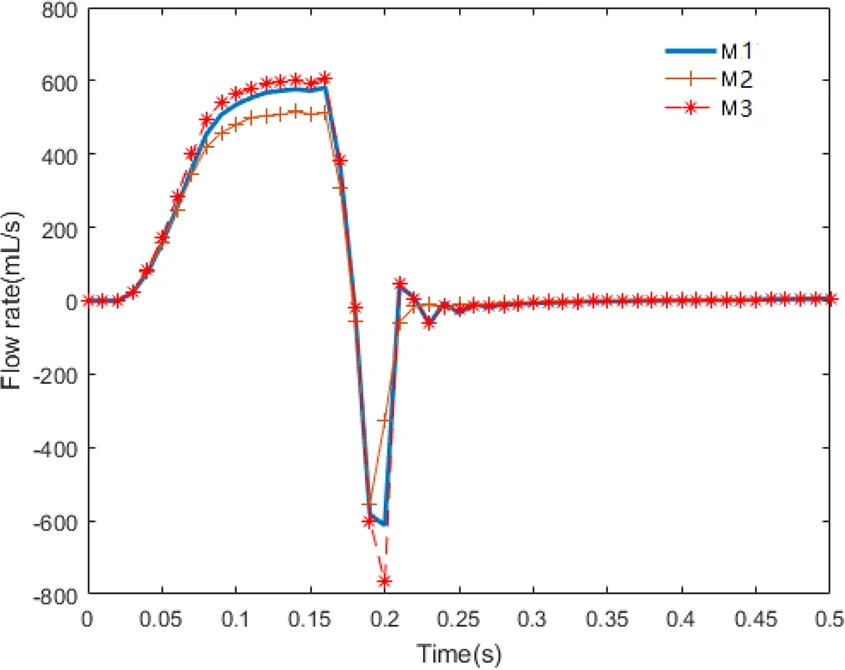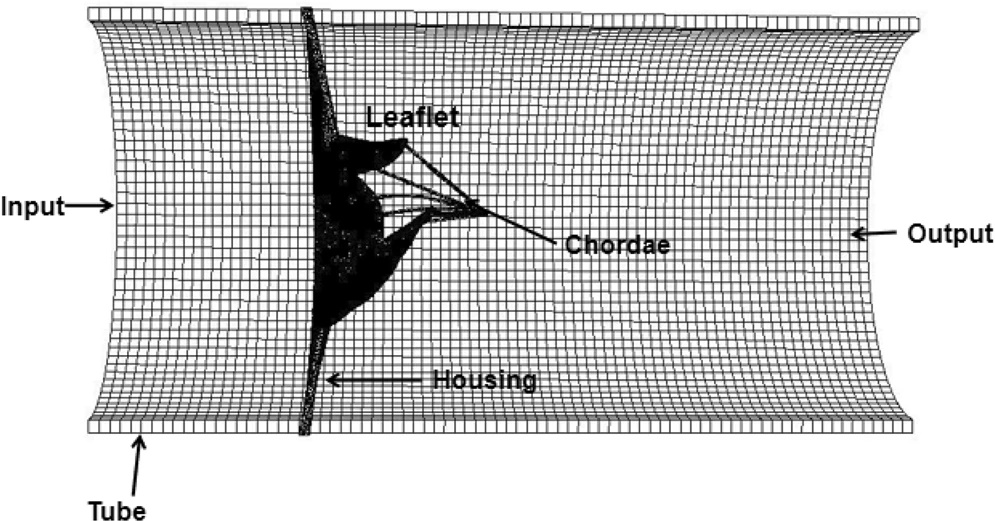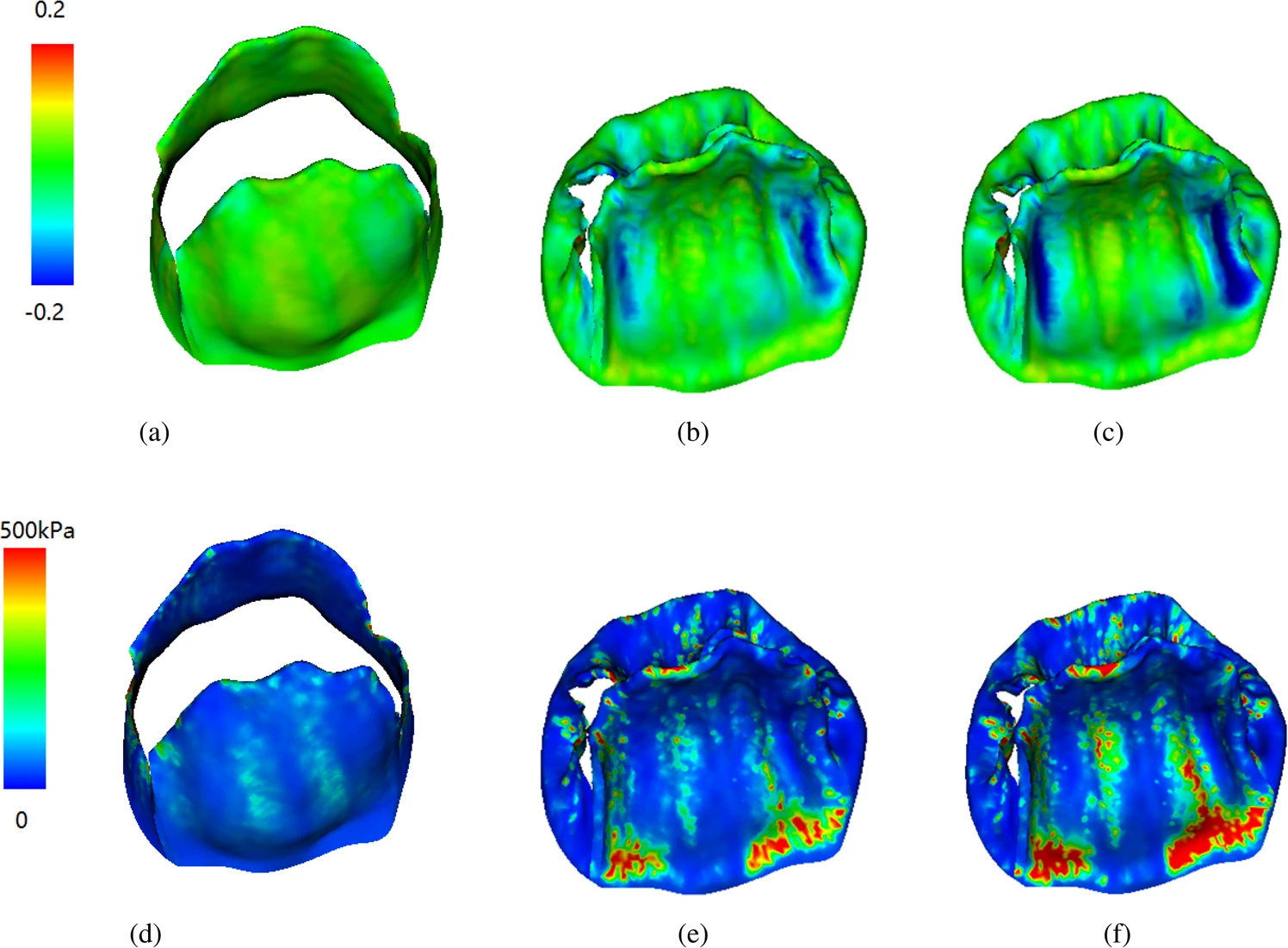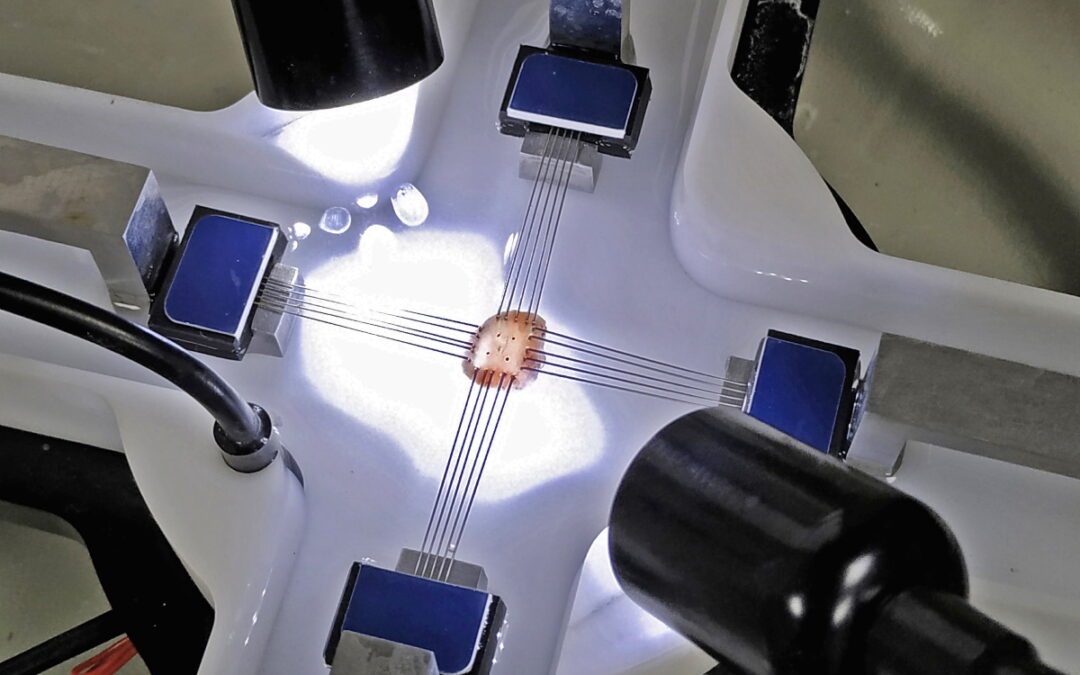Researchers from the SofTMech centre (www.SofTMech.org) at the University of Glasgow use their expertise in soft tissue and fluid mechanics in research into the functions of mitral valve (MV). Together in a collaboration with colleagues of the ChinaHeart centre (www.nwpu-compmath.cn/chinaheart), in particular Northwestern Polytechnical University, Xi-an University of Technology, and Chongqing University, the team looked into three different constitutive laws for the mitral leaflets and two laws for chordae tendineae. MV dynamics with fluid-structure interaction were studied to understand the physiological loading environment of the MV. Factors such as peak jet velocity, closure regurgitation volume and orifice area were calculated from the different constitutive laws and compared.
Below shows a graph of the transvalvular flow rate calculated from the three different constitutive laws. When the MV begins to close, we see the flow rate decreases to a negative value. This is when closure regurgitation occur. Eventually, the MV is fully closed and flow rate returns to zero.

Another interesting image from the research is the reconstructed MV model shown below. Through cardiac magnetic resonance imaging of a healthy volunteer and MV geometry reconstruction, we can clearly see the leaflet, chordae and housing within the boundary conditions.

Finally, the CellScale Biotester played a role in the paper by performing planar biaxial tensile test of the MV (tests were operated at Sichuan University). 8 complete cycles of stretch and release were conducted on each specimen until the load-displacement curve was visibly repeatable. The image below shows the stress and strain distribution of the MV at various stages of opening.

To read the full journal article, click here: https://doi.org/10.1038/s41598-019-49161-6
To find out more about Dr. Luo’s research, click here: https://www.gla.ac.uk/schools/mathematicsstatistics/staff/xiaoyuluo/
To read about mechanical properties and ECM of the venous valve tissue, click here.








